An Istanbul Ferry to a Secluded Treasure Trove
an ode to Josephine Powell and her kilim collection plus a recipe for poached apricots in rose water
This is the monthly free instalment of Journeys Beyond Borders so please do share it with anyone who may find it of interest.
Stepping into the summer home of Vehbi Koç, a billionaire businessman who set up one of the first charitable foundations of the Turkish Republic, is to be met with a staggering display of over 30 rare kilims, or flatweave rugs.
The house, facing the Bosphorus, sits in Büyükdere, a neighbourhood of Sarıyer, refreshingly far away from the more touristy places of Istanbul.
It opened to the public in 2007 to showcase a precious hoard of woven artefacts, dating from the 18th to the 20th century, that had been meticulously collected and logged by the American photographer and textile expert Josephine Powell (1919–2007).
With this in mind, a trip out to Sarıyer makes for a great half-day adventure, boarding a ferry from say Örtaköy, and taking in the views for an hour or so as you pass by the grand yalis (waterfront mansions) of Yeniköy.
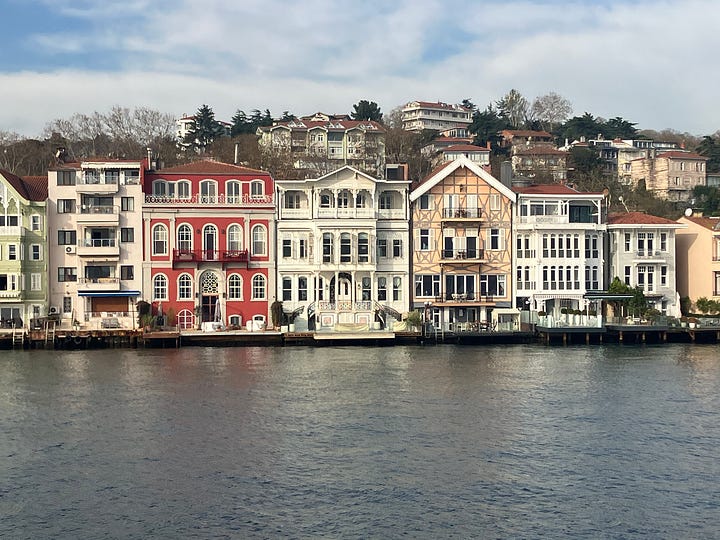


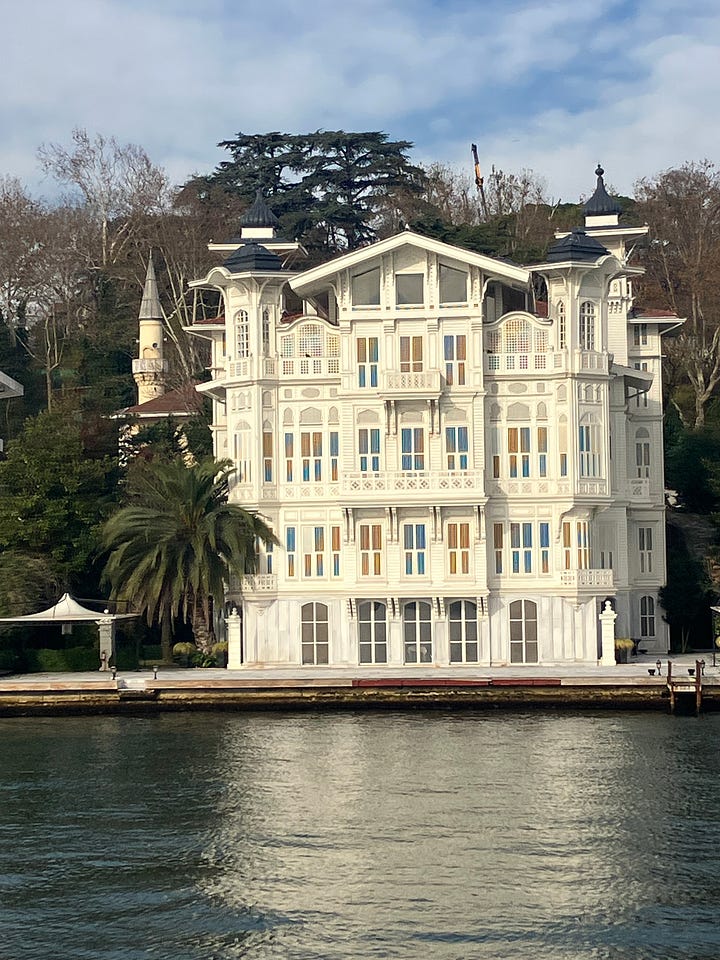
Self-taught as a photographer and textile expert, Powell was born in Manhattan in 1919 and left New York in the mid-1940s to assist in resettling war refugees in Europe.
Having first visited Turkey in 1955, she set off to record the lives of nomadic camps and kilim sellers, while photographing their handicrafts. This project captured lifestyles, and places, now long disappeared or altered beyond recognition.
No wonder, then, that her archive has been sought by both the Fogg Library in Harvard and the British Museum.


For many years Powell had an apartment in Istanbul, in Cihangir, where she kept some of her slides along with field notes and her textile collection which she mainly built up between 1970-1990.
A chain-smoker who lived by her own rules, as Powell grew older she became keen to secure the legacy of her cherished kilims and chose to leave them to the Vehbi Koç Foundation.
Her photography from the 1950s and 1960s is, to me, even more impressive than her kilim collection. Some beautifully backlit, and almost life-sized, images are on display among the rugs as below.
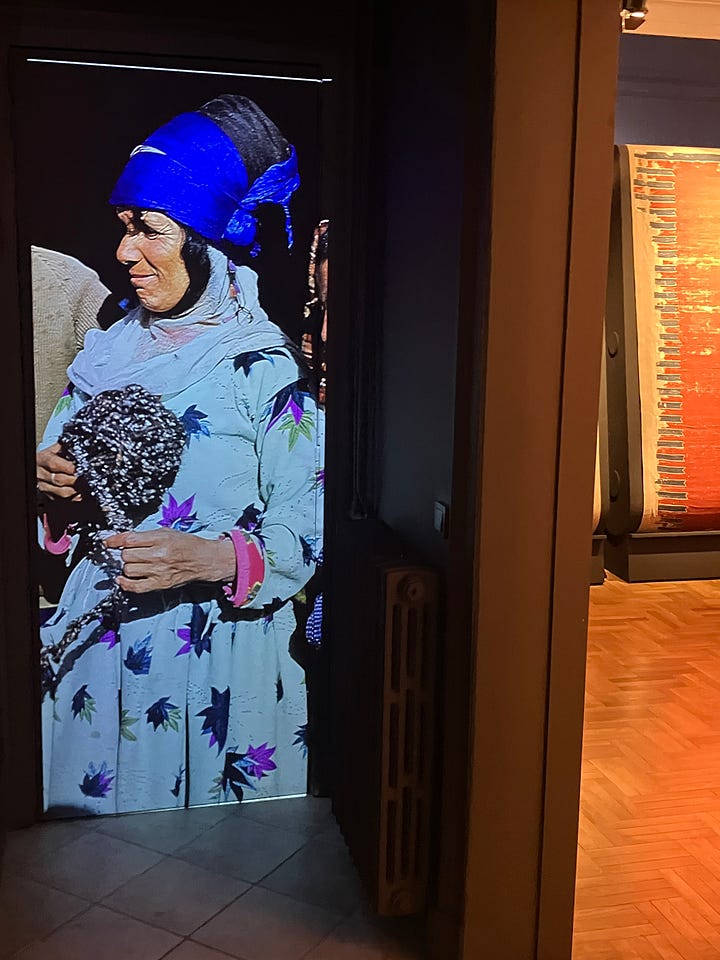
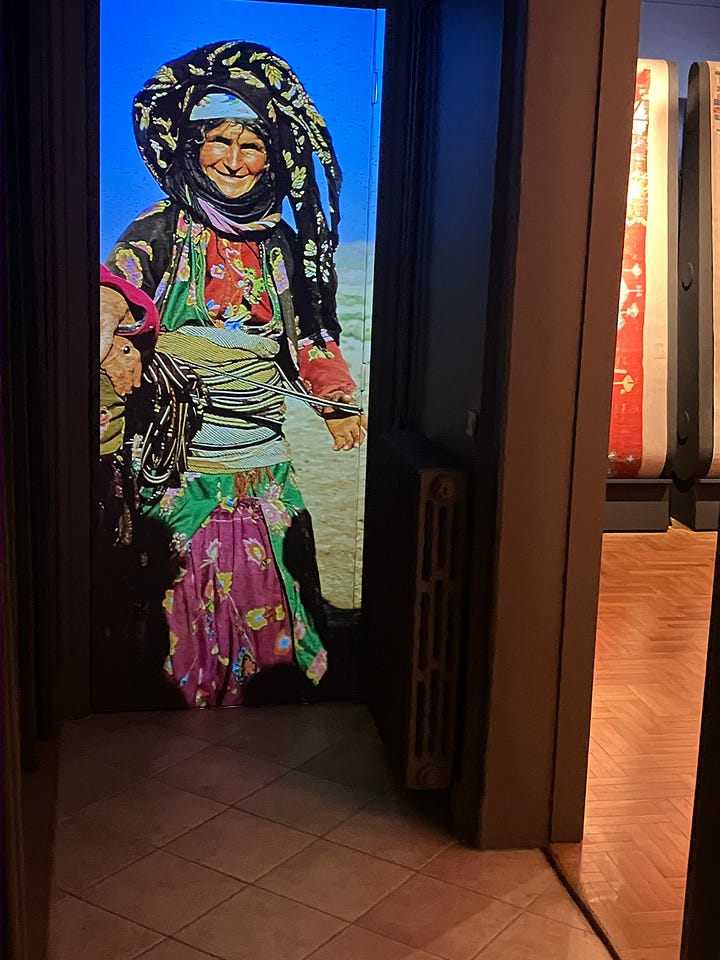
As well as the kilims on display, there is a loom and weaving tools that hang artistically in the atrium.
Here are some highlights from my visit, and you can read more about the house here.
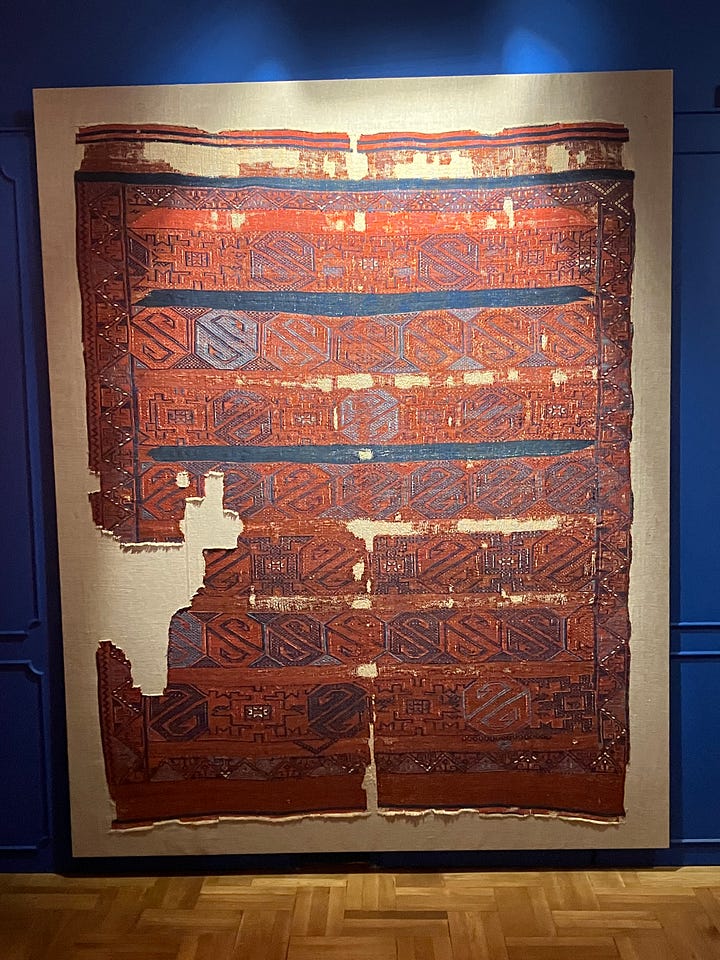
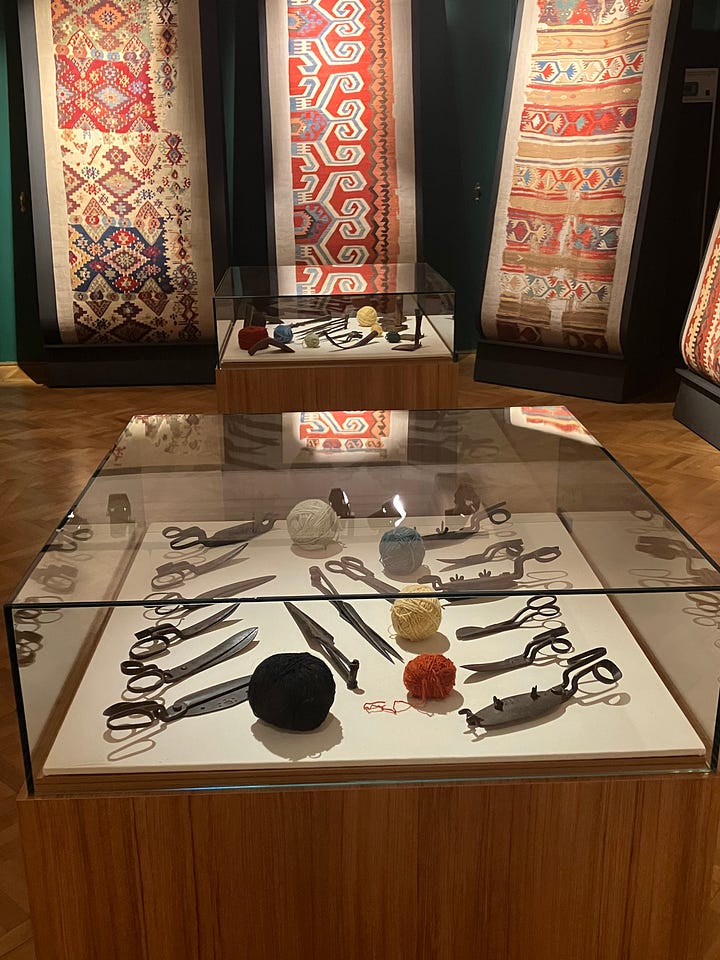
The address is: Vehbi Koç Büyiikdere Evi Piyasa Cad 25-29, Sarıyer. Closed Wednesdays. And the ferry timetable is here.
If you’re keen, the book to buy is What Josephine Saw: Twentieth Century Photographic Visions of Rural Anatolia by Kimberly Hart. The book contains a selection of photographs of the Anatolia that Josephine saw, as well as memorial essays written by her colleagues, friends, and travel companions. You can buy it here.
Poached Apricots in Rose Water
As I drafted this dispatch from Bulgaria, I wanted to share a recipe of mine that includes summer fruits and roses. Bulgaria’s love affair with roses is enduring and nationwide and petals are packed into everything from breakfast jam to massage oil and rose petal brandy. This recipe is super-easy, taking all of around 15 minutes to make.
Serves 4
50g/¼ cup golden caster (superfine) sugar
150ml/10 tablespoons water
400g/14oz ripe apricots, halved and stoned
a few drops of rose water
To serve
crème fraîche
handful of dried rose petals
handful of pistachios, roughly chopped
Put the sugar and water into a small, heavy-based saucepan. Heat until the sugar dissolves. Place as many apricot halves as you can fit comfortably in the pan, cut-side down, and simmer for 4 minutes. Then flip them over and cook for a further minute or two until perfectly tender. Gently remove from the pan using a slotted spoon, and put them in a wide, shallow dish. Repeat with any remaining apricots.
Once they’ve all been poached, pour over the poaching syrup, add the rose water and leave to cool. Put the apricots, with some of the syrup, into glasses, topped with crème fraîche, rose petals and pistachios.










Fascinating.
Love this, must try the recipe